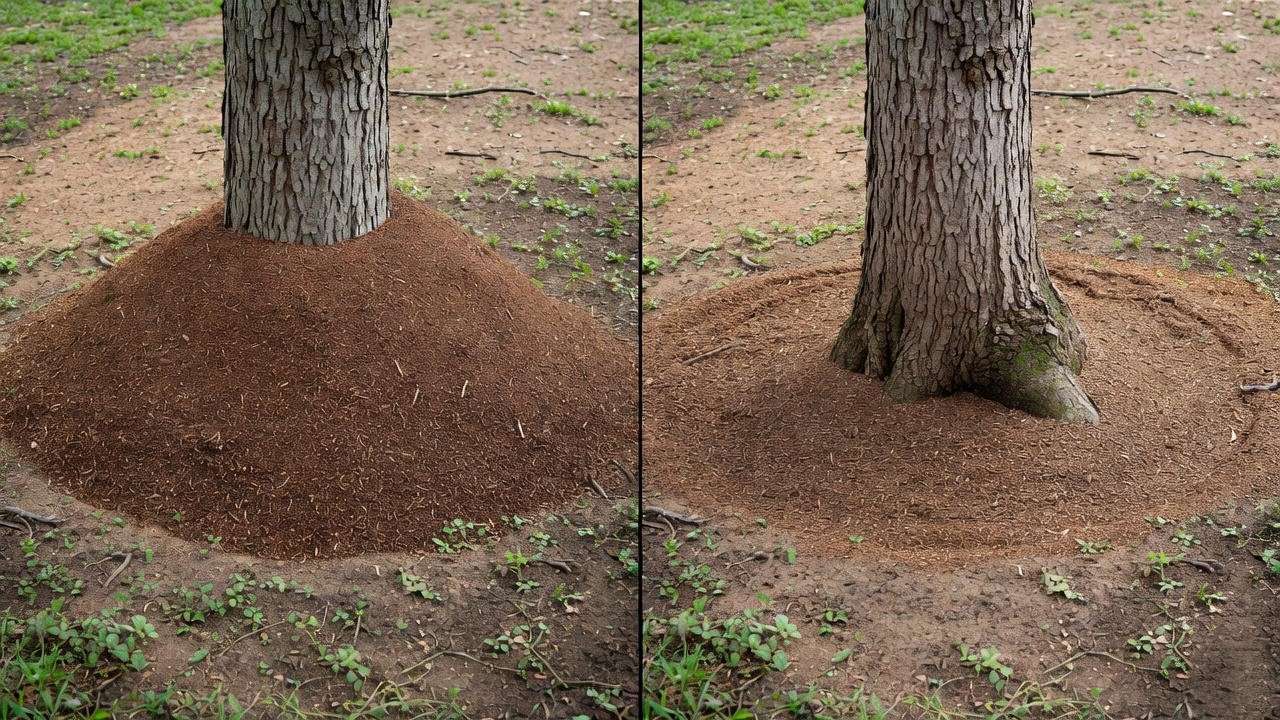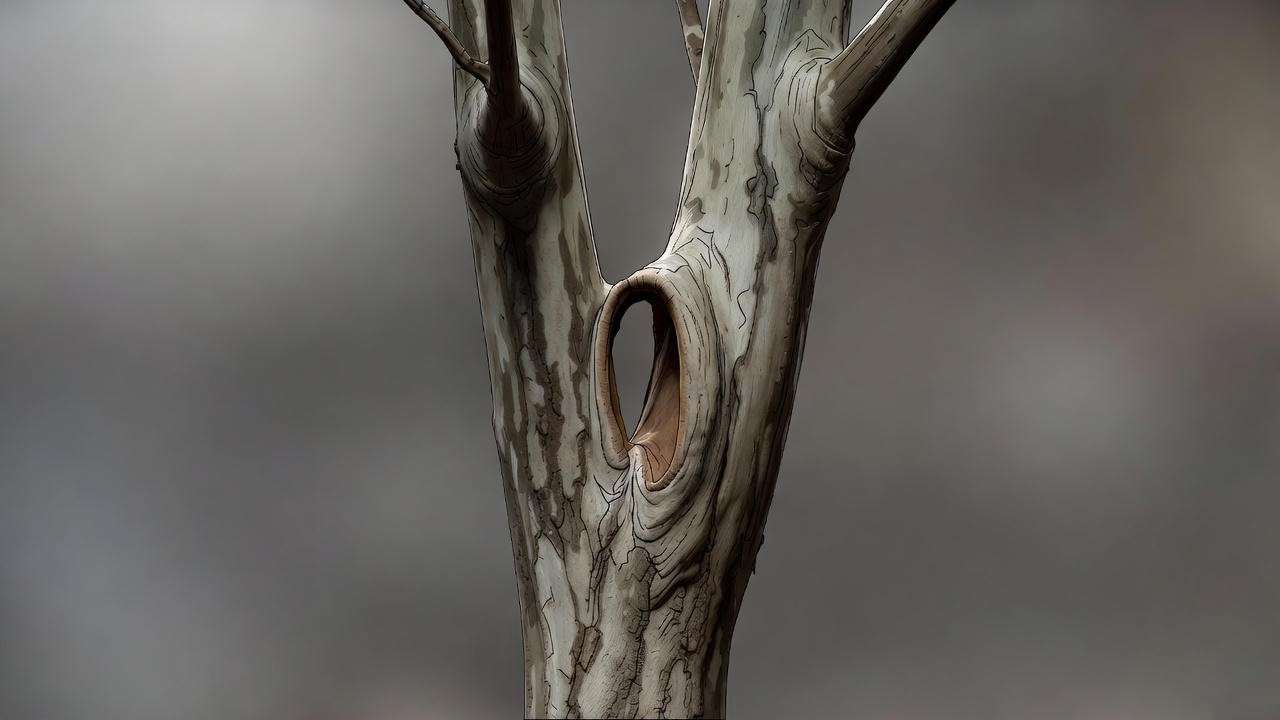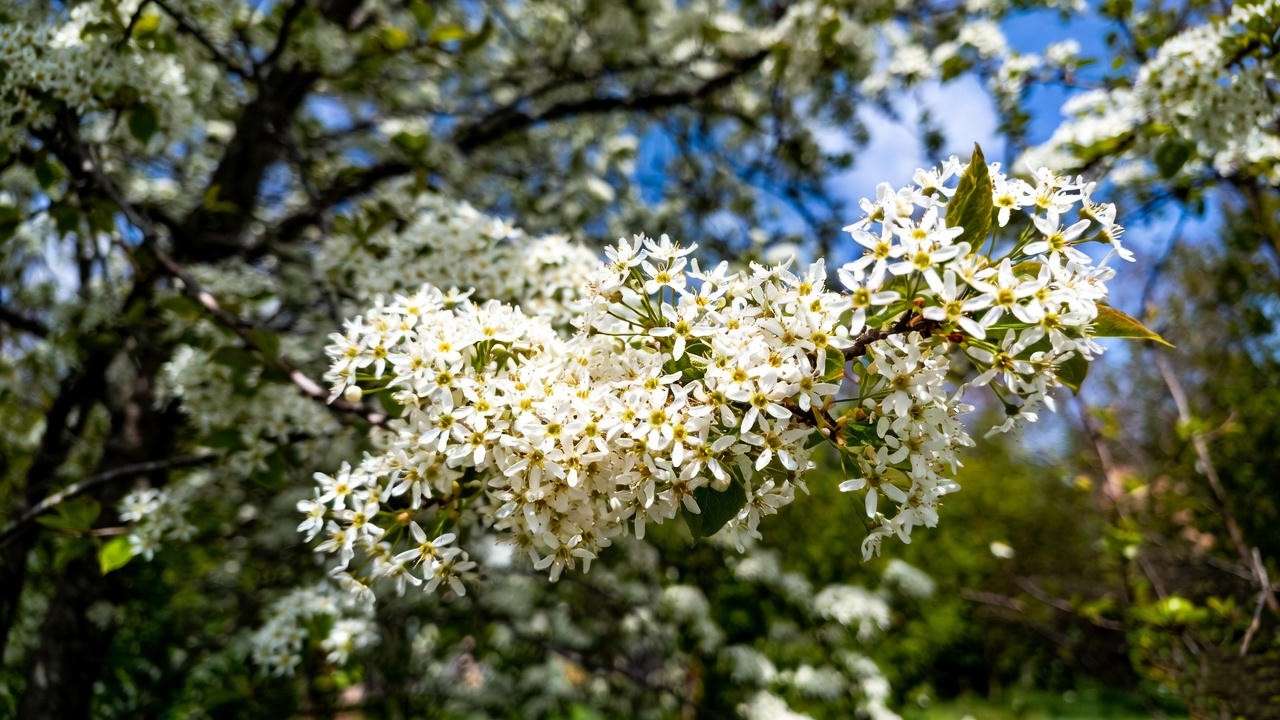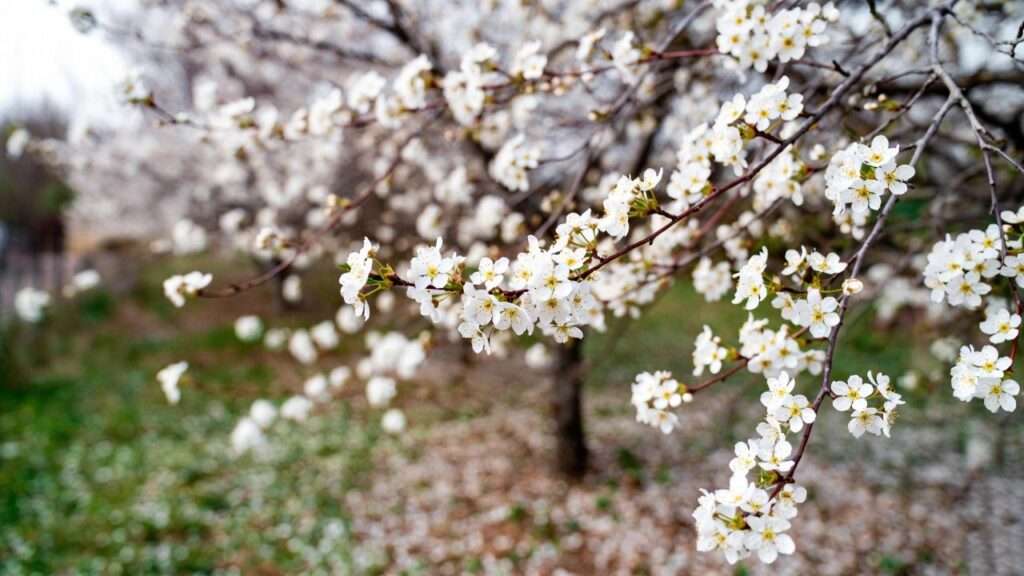Imagine your neighborhood transformed by a sudden, breathtaking cloud of pure white. This spectacle is the signature display of the Cleveland Pear Tree (Pyrus calleryana ‘Cleveland Select’), a cultivar that has become one of the most popular ornamental trees in North America due to its rapid growth, perfect pyramidal form, and glorious early spring flowering. It offers homeowners instant curb appeal and a stunning herald of the gardening season.
But here is the critical warning that every owner must heed: this beautiful ornamental tree, if left improperly managed, is a ticking time bomb. Its aggressive growth pattern leads to severe structural flaws, making it highly susceptible to devastating damage from ice, wind, or heavy snow—often splitting in half years before its expected lifespan ends. For the expert gardener and homeowner alike, understanding the true nature of this tree—its appeal and its profound weaknesses—is the first essential step toward successful management.
This guide moves beyond simple maintenance tips. Drawing on decades of arboricultural expertise, we will provide the precise, proven techniques necessary to mitigate the Cleveland Pear’s inherent risks, manage its common diseases like Fire Blight, and ensure your tree retains its majestic form for as long as possible. By implementing this advanced, proactive care regimen, you can enjoy its stunning spring blooms while safeguarding your landscape from its structural liabilities.
II. 🔎 Foundational Knowledge: Identifying and Siting Your Tree (E-E-A-T Establishment)
To care for the tree effectively, we must first understand its genetic blueprint and specific needs. The Cleveland Pear is a cultivar of the Callery Pear (Pyrus calleryana), a species notorious for its hardiness and, unfortunately, its eventual invasiveness (more on that later).
2.1 Taxonomy and Characteristics (The ‘Cleveland Select’ Difference)
Unlike the original wild Callery Pear, the ‘Cleveland Select’ was bred for a more symmetrical, tear-drop or pyramidal shape and stronger branching structure—a promise that, sadly, often fails without human intervention.
-
Distinguishing Features: The most recognizable trait is the dense canopy of white blossoms that appear before the leaves emerge in early spring. Its leaves are dark green and glossy, turning a reliable, rich reddish-purple or burgundy in the fall. The bark is typically smooth and gray-brown when young, developing shallow fissures with age.
-
Understanding the Graft Union: Like many popular fruit and ornamental trees, the Cleveland Pear is often grafted. The graft union (the slightly swollen area where the top variety meets the rootstock) must remain well above the soil line. If buried, the scion wood can sprout roots, sometimes leading to instability or disease issues.
-
Growth Rate and Mature Size Expectations: This tree is a fast grower, often adding 1 to 2 feet per year, reaching heights of 30 to 40 feet with a spread of 15 to 25 feet. This rapid ascent contributes directly to its structural weaknesses.
2.2 Site Selection and Soil Requirements
The Cleveland Pear is famed for its tolerance, but tolerance is not the same as preference. Optimal siting is crucial for longevity and health.
-
Ideal Sun Exposure: It thrives in Full Sun (at least six hours of direct sunlight per day). While it tolerates partial sun, too little light can reduce the density of flowering and increase susceptibility to fungal diseases.
-
Soil Preference and pH: The tree is highly adaptable, accepting a wide range of soil types—sandy, clay, or loamy. However, it requires soil that is well-draining. It will struggle in continuously soggy conditions. It tolerates both acidic and alkaline soil pH levels, making it a viable choice for challenging urban environments.
-
Critical Spacing Considerations: Due to its mature size and known root-system characteristics, plant the tree at least 15 feet away from foundations, driveways, sidewalks, and utility lines. The potential for branch failure also necessitates placing it well away from structures, parked cars, or high-traffic pedestrian areas.
III. 🌱 Perfect Planting and Watering: Establishing a Healthy Root System
The first year is the most critical time in a tree’s life. The goal is to encourage wide, deep root establishment.
3.1 Step-by-Step Planting Protocol
We recommend the gold standard for planting methodology:
-
The Importance of the Planting Hole: Dig the hole two to three times wider than the root ball, but only as deep as the root ball itself. This wide, shallow “doughnut” shape encourages roots to spread horizontally into the native, uncompacted soil rather than circling in a deep, confined space.
-
Inspecting the Root Ball: Gently remove any burlap, twine, or wire basket material. Use a sharp knife or hand pruners to score or shave the outer layer of the root ball to cut any circling roots. This is essential to prevent girdling roots later in life.
-
Proper Backfilling and Tamping Techniques: Use the original excavated soil to backfill the hole. Do not amend the soil heavily, as this can discourage roots from venturing into the native ground. Tamp gently to remove large air pockets, but avoid compacting the soil, which restricts water and oxygen.
-
Expert Tip: Avoiding the “Volcano” Mulch: Apply a 2 to 4-inch layer of organic mulch (shredded bark, wood chips) in a wide circle around the tree, keeping the mulch 2 to 3 inches away from the trunk. Piling mulch directly against the trunk creates a “volcano” that holds moisture, promotes fungal growth, and invites pests.

3.2 The Critical First Year: Watering for Survival
Proper watering is the key to establishment. Overwatering is just as harmful as underwatering.
-
Seasonal Watering Schedules:
-
Spring (Post-Planting): Water deeply (saturate the root zone) every 3 to 5 days, adjusting for rain.
-
Summer (High Heat): Water deeply every 7 to 10 days. The goal is deep, infrequent watering to force roots down, not shallow, frequent watering that keeps roots near the surface.
-
Fall: Gradually reduce frequency, but continue watering until the ground freezes.
-
-
How to Check for Water Saturation: Use a garden trowel or simply your finger to check the soil moisture. If the top 2 inches feel dry, it’s time to water. If it feels moist, wait.
-
Strategies for Drought or Excessive Rain: During drought, prioritize deep watering. If the area experiences prolonged rain, check for standing water near the trunk and ensure drainage is clear to prevent root rot.
IV. ✂️ The Expert’s Guide to Structural Pruning (Addressing the Weakness)
This section is arguably the most crucial for the Cleveland Pear’s long-term survival. Without proper, proactive pruning, the tree is highly likely to suffer catastrophic failure.
4.1 Why Cleveland Pears Fail: The V-Crotch Problem
The Cleveland Pear naturally wants to grow with narrow, acute angles (V-shapes) between the trunk and major branches.
-
Understanding Co-Dominant Leaders and Included Bark: When two or more branches grow at these sharp V-angles, they compete equally for dominance. As they grow thicker, the bark becomes physically pinched or “included” between them. This structural configuration is incredibly weak, lacking the strong collar tissue found in broad-angled U-shaped branch attachments. When stressed by wind, ice, or weight, the bark and wood are easily peeled apart, leading to a catastrophic split of the trunk.
-
How a Central Leader Structure Prevents Calamity: The goal of pruning is to establish one single, dominant main trunk (the central leader) with branches attached at wide, strong angles. This is the most effective preventative maintenance you can perform.

4.2 When and How to Prune
Timing and technique are everything for the health and structural integrity of the tree.
-
Optimal Pruning Timing: Late winter or early spring (before the buds swell) is the best time for major structural pruning. The tree is dormant, disease transmission risk is low, and the lack of leaves makes it easy to see the structure and identify co-dominant leaders.
-
The Three-Cut Method for Branch Removal: To remove a large branch without tearing the bark:
-
Undercut (1st Cut): Make a shallow cut on the underside of the branch, about 6–12 inches away from the trunk.
-
Removal Cut (2nd Cut): Cut the branch off completely, slightly further out from the undercut. The undercut prevents tearing.
-
Final Cut (3rd Cut): Cut the stub remaining back to the branch collar (the slightly swollen ridge where the branch attaches to the trunk). Do not cut into the collar, as this tissue is essential for the tree’s natural healing process.
-
-
Proactive Structural Pruning (The Essential Technique): Systematically target and remove one of the competing leaders in any V-crotch. Select the one with the narrower angle or weaker growth and eliminate it, leaving the stronger, wider-angled branch to flourish. Over time, you force the tree to adopt a single-leader structure.
4.3 Developmental Pruning Timeline
-
Year 1-3: Focus intensely on establishing the central leader and removing competition. Prioritize removing temporary lower limbs that hinder access or are rubbing. This early investment pays huge dividends in stability.
-
Maintenance Pruning: After the structure is established, maintenance primarily involves removing dead, diseased, or damaged (the “3 D’s”) wood, as well as any branches that are crossing or growing inward toward the center of the canopy.
-
📌 Expert Insight Box: Never remove more than 25% of the live crown in one season. Removing too much foliage at once will shock the tree, encouraging water sprouts (epicormic growth) which are weakly attached, defeating the purpose of structural pruning, and making the tree more susceptible to stress. Focus on gradual, consistent intervention.
V. 🚨 Common Problems and Troubleshooting (Diagnosis and Treatment)
Despite the reputation for hardiness, the Cleveland Pear is highly susceptible to several key diseases and pests. Proactive scouting and identification are essential for maintaining a healthy appearance and longevity.
5.1 Disease Management Spotlight
The following disease is the single most common reason for the demise or disfigurement of Callery Pear cultivars.
-
H3: Fire Blight (The #1 Threat):
-
Identification: Fire Blight, caused by the bacterium Erwinia amylovora, is devastating. The most recognizable symptom is the shepherd’s crook—the curled, blackened tip of new shoots—which looks as though it has been scorched by fire. Dead blossoms and leaves will cling to the branch, giving the tree a burned appearance.
-
Prevention and Surgical Removal Protocols: The bacteria often enter the tree through open blossoms, making control difficult. The only effective treatment is surgical excision. During the dormant season (or immediately upon discovery, even in summer), cut the infected branch 8 to 12 inches below the visible point of infection to ensure all bacteria are removed. Crucially, sterilize your pruning tool blades with a 10% bleach solution or rubbing alcohol between every single cut to avoid spreading the bacteria to healthy tissue.
-
-
H3: Leaf Spot and Scab: These are common fungal issues, usually cosmetic. While they cause black or brown spots on leaves, they rarely kill the tree. They are most prevalent during cool, wet spring weather. Management typically involves raking up and destroying infected fallen leaves in the autumn to break the fungal life cycle, and ensuring good air circulation through proper, minimal thinning of the canopy.

5.2 Pest Alert and Integrated Pest Management (IPM)
Successful pest control relies on the principles of Integrated Pest Management (IPM)—using the least toxic method first.
-
H3: Callery Pear Psyllid: This tiny, jumping insect feeds on new growth, causing leaves to curl and disfigure. Telltale signs include the presence of clear, waxy honeydew and the resulting black sooty mold that grows on the excrement. Non-chemical controls are often effective: a strong jet of water can knock the pests off, and encouraging natural predators (like lacewings) helps. For heavy infestations, a dormant oil spray applied in late winter can smother overwintering eggs.
-
H3: Spider Mites and Scale:
-
Mites: Thrive in hot, dry conditions. Look for fine webbing on the undersides of leaves.
-
Scale: Appear as small, stationary bumps (usually brown or white) clinging to branches.
-
Treatment: Horticultural oil applied during the dormant season or when pests are active is the preferred treatment for both, as it is relatively safe for beneficial insects while being highly effective against these soft-bodied pests.
-
5.3 Addressing Nutrient Deficiencies
Healthy, vigorous growth helps the tree fight off disease and pests.
-
H3: Signs of Chlorosis (Yellowing Leaves): If leaves are yellowing, but the veins remain green, this often indicates iron chlorosis. This is common in trees planted in high-pH (alkaline) soils, where essential micronutrients like iron become “locked up” and unavailable to the roots.
-
H3: Fertilization Best Practices: The best way to fertilize a mature tree is through deep root feeding with a balanced slow-release fertilizer or, for chlorosis, by applying chelated iron. Avoid heavy nitrogen fertilizers, especially in the first few years, which encourage the rapid, weak growth we are trying to prevent.
VI. 🌍 The Callery Pear Controversy: Invasion and Alternatives (Ethical and Authoritative Content)
A truly comprehensive guide to the Cleveland Pear must address the significant ecological shadow cast by its parent species, the Pyrus calleryana. This section provides the necessary authoritative context and offers responsible choices for future landscaping.
6.1 The Invasive Problem
The Callery Pear, the parent species, is listed as invasive in numerous states. The issue is not the Cleveland Select cultivar itself, but its reproductive strategy.
-
H3: How the Cultivar Mutates: Cultivars like ‘Cleveland Select’ are technically sterile when planted alone. However, they readily cross-pollinate with other Callery Pear cultivars (like ‘Bradford’ or ‘Aristocrat’) and, critically, with the wild rootstock. The resulting offspring are viable, fertile seeds, dispersed by birds, which revert to the extremely thorny, aggressively spreading, and undesirable wild form of Pyrus calleryana.
-
H3: Ecological Impact: These invasive seedlings rapidly form dense, impenetrable thickets in fields, along roadsides, and in forests. They outcompete native plants that support local insect and bird populations, drastically reducing biodiversity and disrupting natural ecosystems. This makes planting new Callery Pear cultivars an increasingly discouraged practice by conservationists and arborists.

6.2 Recommended Native and Non-Invasive Alternatives
For those seeking the beauty of the Cleveland Pear without the structural risk or ecological hazard, several native trees provide similar ornamental value with far greater environmental benefits.
-
H3: For White Blooms (A Native Alternative):
-
Serviceberry (Amelanchier laevis): Offers beautiful white blooms in spring, edible berries for birds, excellent fall color, and a much better-behaved growth habit.
-
Flowering Dogwood (Cornus florida): Iconic spring blooms and layered branching structure.
-
-
H3: For Excellent Fall Color:
-
Tupelo (Nyssa sylvatica): Known for its phenomenal, reliable scarlet and orange fall color. It is structurally sound and drought-tolerant once established.
-
Red Maple Cultivars (Acer rubrum): Offer a fast growth rate and strong structure, with vibrant red-to-yellow fall foliage.
-
-
H3: For Small Spaces:
-
European Hornbeam Cultivars (Carpinus betulus): A dense, narrow tree that holds its leaves late into the winter, offering good screening and high structural integrity.
-
VII. ❓ Frequently Asked Questions (Boosting SERP Visibility)
Addressing common queries directly ensures the article captures relevant search traffic and qualifies for valuable Google Answer Boxes and People Also Ask features.
7.1 General Tree FAQs
-
H3: How long do Cleveland Pear Trees typically live?
-
Due to structural failure, the typical urban lifespan is often only 15 to 25 years, significantly shorter than many other ornamental trees. However, with the aggressive structural pruning methods described here, some can be nursed to 35-40 years.
-
-
H3: Do they produce edible fruit?
-
The fruit of the Pyrus calleryana is very small, hard, and generally considered inedible for human consumption. It is, however, readily consumed by birds and other wildlife, which is the mechanism for seed dispersal and invasiveness.
-
-
H3: When is the best time to fertilize my Cleveland Pear?
-
The best time for fertilizer application is generally late fall (after leaf drop) or early spring (before bud break), during the dormant season. This allows the tree to focus its energy on root development rather than excessive top growth.
-
7.2 Safety FAQs
-
H3: Is the wood strong enough for hammocks or swings?
-
Absolutely not. Given the inherent tendency for branch and trunk splitting due to weak V-crotches and included bark, the Cleveland Pear is a poor choice for any activity that puts extra stress or leverage on its branches.
-
-
H3: Are the tree’s parts toxic to pets or wildlife?
-
While the fruit is generally harmless to wildlife, the leaves and seeds of some pear species can contain cyanogenic glycosides which, if ingested in large quantities, can be mildly toxic to dogs and livestock. However, serious poisoning is rare.
-
VIII. ✅ Conclusion: Mastering the Care of Your Cleveland Pear
The Cleveland Pear Tree offers a brilliant, if fleeting, season of snowy white beauty. However, its value is directly proportional to the effort invested in its long-term care.
To ensure your tree remains a landscape asset rather than a liability, adhere to these three critical, expert-level takeaways:
-
Prioritize Proactive Structural Pruning: Commit to annual dormant-season pruning to enforce a single central leader and eliminate weak V-crotches. This is the single most important action to prevent storm damage.
-
Diligent Scouting: Perform yearly inspections for the tell-tale signs of Fire Blight, and be ready to surgically remove infected material immediately, sterilizing your tools consistently.
-
Choose Wisely for the Future: While you can manage your existing Cleveland Pear, consider planting one of the recommended native alternatives for all future landscaping projects to promote structural stability and support local ecology.
By embracing this essential, authoritative guide, you are not just maintaining a tree; you are actively managing its structural destiny, allowing you to appreciate those stunning spring blooms safely for years to come.













